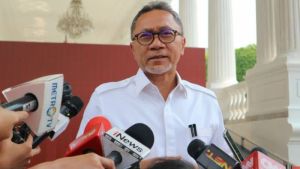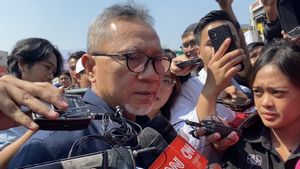Coordinating Minister for Food Affairs (Menko Pangan) Zulkifli Hasan said that the new land clearing is a step that the government must take to achieve food self-sufficiency in 2027.
Zulhas, as soon as he was called, explained that efforts to open new land for food barns had begun to be worked on in Merauke covering an area of 100,000 hectares from the target of 1 million hectares.
"Indeed, there is no choice, we have to open new land. Our future is now and will come, Papua. Merauke has more than 1 million (ha) (targets)," he said at Sarasehan 100 Indonesian Economists, in Jakarta, Tuesday, December 3.
The printing of these rice fields will be prioritized for food commodities, especially rice. However, the government has also started to develop sugarcane commodities in Papua covering an area of 200,000 hectares from the target of 600,000 hectares.
Even so, Zulhas admitted that the opening of new land was not easy. He revealed that several government projects also failed. As happened in Central Kalimantan.
"Likewise, in the past, we studied the development of food estate in Central Kalimantan. Is it because there is no sincerity, there is moral hazard, so we are optimizing it," he explained.
Meanwhile, Indef Research Director Berly Martawardaya said that not all land in the Eastern region of Indonesia is not suitable for rice commodities to grow.
"Indeed, Indonesia's areas that are suitable for rice are not too much, Java, parts of Sumatra, and maybe parts of Sulawesi. But for Eastern Indonesia, in particular, our land is not suitable, so if you are encouraged or want to grow rice there, the investment is very large and expensive," said Berly.
SEE ALSO:
Instead of forcing land for rice plants, Berly assessed that the government needed to encourage efforts to diversify local food in the region. He said this step was also an effort to suppress dependence on rice.
"Why don't we push sweet potatoes, cassava, tates, sago ones, which are also local foods, but maybe with a touch of chef-chef or new culinary experts, so that they become sold out in young people. So young people don't have to eat rice, for Eastern Indonesia it's expensive and difficult to grow and carry," he explained.
The English, Chinese, Japanese, Arabic, and French versions are automatically generated by the AI. So there may still be inaccuracies in translating, please always see Indonesian as our main language. (system supported by DigitalSiber.id)
















